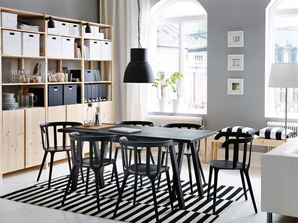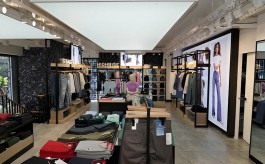Ikea's continental shift
February 02, 2016
The Swedish furniture giant is gently easing in, setting out an investment of Rs 500 crore per store as it looks to capture a new market and beat a young breed of homegrown furniture sellers
 "We look at India as a continent in terms of our reach," says Ulf Smedberg manager, marketing, Ikea India. Joining the growing crowd of foreign retailers, the Swedish furniture giant is getting started on its India journey. It has been going door-to-door, talking to customers and trying to understand their preferences, as it stocks up its first store that is spread over 4,00,000 square feet, set to open in Hyderabad by June-July 2017. Each store will have a cafe, which keeping in mind local tastes, will boast a select vegetarian section; even a vegetarian version of the traditional Swedish meatballs and lingonberry jam will be on the menu.
"We look at India as a continent in terms of our reach," says Ulf Smedberg manager, marketing, Ikea India. Joining the growing crowd of foreign retailers, the Swedish furniture giant is getting started on its India journey. It has been going door-to-door, talking to customers and trying to understand their preferences, as it stocks up its first store that is spread over 4,00,000 square feet, set to open in Hyderabad by June-July 2017. Each store will have a cafe, which keeping in mind local tastes, will boast a select vegetarian section; even a vegetarian version of the traditional Swedish meatballs and lingonberry jam will be on the menu.Ikea is present in 43 countries. The brand is associated with affordability, a European minimalist, do-it-yourself design sensibility as well as being a one-stop shop for all furniture and furnishing requirements.
The big challenge as it builds a home in India will be to gain acceptance into Indian homes. And there are two reasons why the challenge has just got more difficult. For one, affordability is the mantra of many new furniture brands, especially since the launch and take-off of e-commerce furniture portals such as Pepper Fry and Urban Ladder. Not only have they occupied the space that Ikea wants to, their overheads are light too as they do not invest in physical stores.
Aware of the challenge, Ikea has buried itself deep into customer research; home visits and market studies have been conducted in many cities. "This will help us create a close connection when we launch. Our intimate discussions with families and observing their normal day routine, helps us create better solutions," says Smedberg.
Country or continent
India is not one homogenous consumer base and the brand will have to define itself differently in different geographies. Ikea is sticking to the urban professional community to begin with. Apart from Hyderabad, it is planning stores in Delhi NCR, Mumbai and Bangalore. The company says it will open up to 25 stores by 2025 with an investment of approximately Rs 500 crore per store. Once the brand is established in the big cities, the company plans to take it to Tier 2 and 3 towns.
"We want people to know that it is a caring company that understands the needs of its consumers," says Patrik Antoni, manager sustainability and country head communications, Ikea India.
The company is also determined to create an experience at its stores. "Everything is under one roof. It is like an excursion for the entire family just like in an amusement park," says Smedberg. At the same time, each store will be tailored to meet the specific regional/geographical needs. "Each individual store would be different in terms of sizes to reflect the local market. (We) don't know yet if there are different design sensibilities or not. We will learn that over time," says Antoni.
Still, if there is anything that the initial research shows, it is that the march into Indian homes is not going to be easy. "Indians love their homes but home furnishing is not high up in their agenda," says Antoni. Another roadblock could be the do-it-yourself concept, which is fairly new in a country that is heavily service demand oriented. "Initially it will be different for people, but over time they wouldn't mind the concept as it has worked in Europe, the Americas and elsewhere," says Antoni. The well-travelled aspirational class is the company's target group and, as the research teams have reported, there is already significant chatter about the brand in this circle.
Something for everyone
The stores are being stocked so that there is "something for everyone," assures Antoni. With ¤3.5 billion euros (Rs 25.800 crore) as net profit for the year 2015, an increase of 5.5 per cent compared to 2014, Ikea today is one the most profitable brands in the world. It also has a robust presence online. According to the company, its website alone saw sales of ¤1 billion out of the ¤31.9 billion sales for FY15 (a jump of 11.2 per cent from the previous year).
"India is a huge market with big potential to grow the home furnishings market. We are in India for the long term," says Smedberg. He points out that Ikea believes in taking control of the supply chain right from raw materials to designs; production to delivery. Over the past 30 years Ikea teams have scoured the country sourcing materials for their products sold globally. In that sense India is not uncharted territory. As of today, in India, the company has around 50 suppliers, 45,000 direct employees that work with the suppliers, and about 4,00,000 people as a part of extended global supply chain .
"Ikea's ambition is to provide solutions to as many people as possible," says Smedberg. And Antoni adds, the brand wants to be seen as, "Good for India, good for society at large and more importantly, good for me (customer)." The young Indian setting up a home for the first time is soon going to be spoilt for choice.
Advertisement








